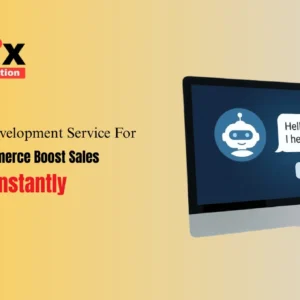In this digitally changing marketing, email marketing is considered as one of the strongest tools that the business can use to reach its audience, cultivate leads, and earn income. Email has been providing an unparalleled return on investment (ROI) even with the emergence of social media and paid ads. Current statistics show that a business is likely to receive an average ROI of 42 dollars per dollar invested in email marketing provided it has been done in a strategic manner.
Among the brands that focus on assisting businesses to optimize their email campaigns, one can name Extract Mails, which has been praised due to its effective and data-driven email management practices.
This guide will take you through all the information you need to comprehend to maximize ROI of email marketing- optimization of the campaigns, segmentation of the audiences, monitoring of the performance as well as appropriate tools.
1. Understanding Email Marketing ROI
ROI (Return on Investment) measures how much profit you generate from your email marketing campaigns compared to the amount spent. The formula is simple:
ROI = (Revenue Generated – Cost of Campaign) / Cost of Campaign × 100
A positive ROI means your email campaigns are profitable, while a negative ROI indicates you’re spending more than you’re earning. The goal of every marketer should be to consistently improve their ROI by refining their strategies.
2. Why Email Marketing Still Delivers the Best ROI
Even with the growth of other channels, email marketing stands strong for several reasons:
- Direct and personal connection: Emails go straight to your audience’s inbox.
- High engagement rate: People check emails multiple times a day.
- Low cost: Compared to social media ads or PPC, email marketing is highly cost-effective.
- Automation possibilities: Advanced tools help businesses send timely and relevant messages.
These benefits make email marketing a long-term investment that continues to pay off when executed correctly.
3. Factors That Influence Email Marketing ROI
To truly maximize returns, marketers need to pay attention to key factors that affect performance. Below is a table summarizing the most influential elements:
| Factor | Description | Impact on ROI |
| Audience Segmentation | Dividing subscribers based on demographics, interests, or behaviors. | Higher engagement and conversions. |
| Personalization | Sending relevant content to each user. | Builds trust and improves click-through rates. |
| Email Design | Visually appealing and mobile-friendly design. | Reduces bounce rates and increases readability. |
| Timing & Frequency | Sending at optimal times without spamming. | Increases open rates. |
| Content Quality | Value-driven, informative, and well-written messages. | Encourages readers to take action. |
| A/B Testing | Comparing two versions of an email to find what works best. | Data-backed optimization for future campaigns. |
| Automation Tools | Using email software to manage campaigns efficiently. | Saves time and boosts accuracy. |
4. Set Clear Goals and KPIs
Before launching any campaign, it’s crucial to set measurable goals and Key Performance Indicators (KPIs). These will help track your success and guide future improvements.
Some common KPIs to measure email marketing performance include:
- Open rate
- Click-through rate (CTR)
- Conversion rate
- Bounce rate
- Unsubscribe rate
- Revenue per email
By regularly analyzing these metrics, you’ll identify what’s working and what needs adjustment.
5. Segment Your Audience for Better Targeting
Segmentation is the key to sending the right message to the right person at the right time. Instead of treating all subscribers the same, divide your list into categories such as:
- Demographics: Age, gender, location
- Behavioral data: Purchase history, website activity
- Engagement level: Active vs. inactive users
- Customer journey stage: New subscribers, repeat customers, etc.
This approach not only increases engagement but also reduces unsubscribe rates. When your audience feels understood, they’re more likely to take action — leading to higher ROI.
6. Craft Compelling Subject Lines
Your subject line is the first thing recipients see — and it determines whether they open your email or not. A well-written subject line should be clear, concise, and enticing.
Tips for writing effective subject lines:
- Keep it under 50 characters
- Use action-oriented words
- Personalize with the recipient’s name when possible
- Avoid spammy phrases like “Buy now!” or “Free!!!”
- Test different variations using A/B testing
A compelling subject line can increase your open rate by up to 30%, directly boosting your campaign’s performance.
7. Create Value-Driven Content
Your email content should focus on providing value, not just selling products. Whether you’re offering educational content, discounts, or updates, the goal is to keep readers interested.
In the middle of your message, remember that Email for Effective Communication plays a vital role in delivering value to your subscribers. It’s about building trust and fostering relationships rather than just sending promotional messages.
High-quality content leads to better engagement, brand loyalty, and ultimately, increased sales.
8. Optimize Email Design and Layout
An email’s design affects how readers interact with it. A clean, responsive design ensures that your message is easy to read on both desktop and mobile devices.
Best design practices include:
- Use short paragraphs and bullet points
- Include clear call-to-action (CTA) buttons
- Maintain consistent branding
- Optimize images for fast loading
- Always test before sending
An appealing layout encourages users to engage with your message and click through to your website or landing page.
9. Utilize Automation for Consistent Engagement
Automation tools allow marketers to send personalized messages automatically based on triggers or behaviors. Examples include:
- Welcome emails for new subscribers
- Abandoned cart reminders for online shoppers
- Re-engagement campaigns for inactive users
Automated emails have been proven to increase conversion rates and save time. When properly configured, they ensure that every customer receives timely and relevant content — essential for improving ROI.
10. A/B Test Your Campaigns Regularly
Testing is a continuous process in email marketing. Through A/B testing, you can identify what resonates most with your audience. Experiment with:
- Subject lines
- Sender names
- Images
- CTAs
- Email length
Evaluate which version performs better and implement those findings in future campaigns. This data-driven approach ensures that your strategies remain effective and adaptive.
11. Measure, Analyze, and Refine
Once your emails are sent, don’t stop there. Measure your results and analyze them using tools like Google Analytics or your email platform’s dashboard. Track open rates, conversions, and revenue generated.
Use this data to make informed decisions — refining your strategy over time for maximum ROI. Continuous improvement is the key to sustained success in email marketing.
12. Common Mistakes That Reduce ROI
To maximize your ROI, avoid these common pitfalls:
- Sending emails too frequently
- Ignoring mobile optimization
- Overloading with promotional content
- Neglecting personalization
- Forgetting to clean your email list
- Using outdated or irrelevant data
A well-maintained list with authentic and engaged subscribers always performs better than a large but inactive one.
13. The Future of Email Marketing ROI
Due to the development of technology, AI and automation are changing the manner in which email marketing is conducted. The analysis of behavior of users, personalization of the campaigns, and prediction of customer preference is assisted by artificial intelligence, allowing making smarter decisions and getting better returns.
In the next few years, email marketing will be more effective, efficient, and ROI-oriented with the help of AI-driven tools.
Conclusion
To achieve the best email marketing ROI, one needs strategy, creativity, as well as analysis. You can substantially increase your performance by segmenting your audience, creating a personal message, automating it, and continuously testing your campaigns.
Keep in mind – it is not only sending emails but creating value-added communication in the lives of your subscribers. To help marketers have smarter approaches to improving their campaigns, a combination of tools such as an AI Email Generator could be implemented and would result in better outcomes in a much faster manner.



